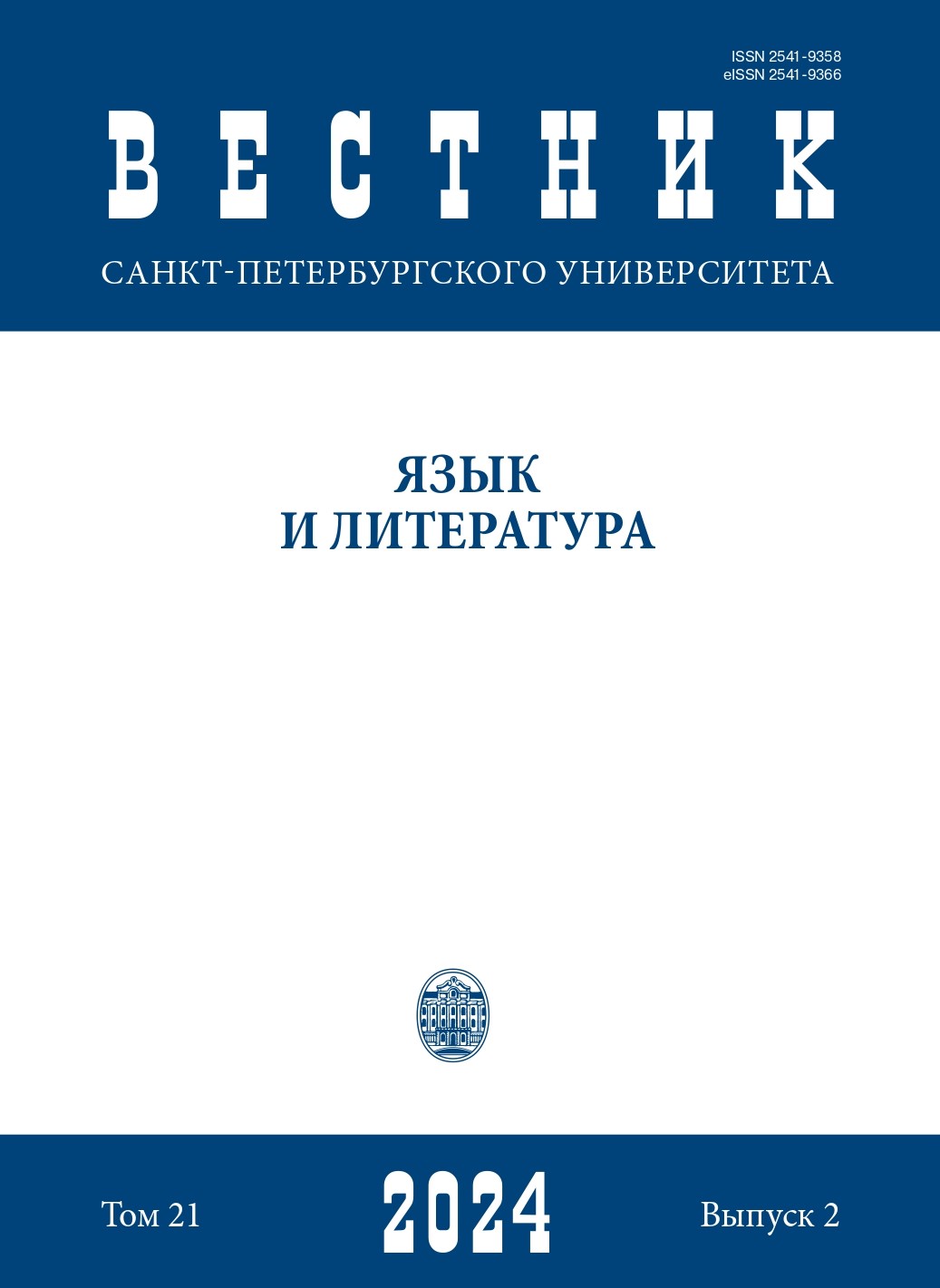On the synchronic and diachronic approaches to the codification of chronologically correlated pronunciation variants
DOI:
https://doi.org/10.21638/spbu09.2024.212Abstract
The article raises the question of the possibility of combining a synchronic and diachronic approach in the formulation of codification recommendations in orthoepic dictionaries. The analysis showed a number of problems when introducing information about chronologically correlated pronouncing variants. А combination of synchronic and diachronic aspects in the codification of orthoepic norms is possible. Changing the information attributed to normative marks allows not only to fix the real pronunciation in a particular era, but also makes it possible to submit the material systematically, indicating dynamic processes. But it should be distinguished: the parallel existence of different sociolinguistic subsystems, which can be called the older and younger systems and the simultaneous functioning of different normative subsystems. There is no one-to-one correspondence between these two descriptions. It is proposed to introduce the following marks into lexicographic practice: “obsoleting” — indicates that the second variant is less commonly used, it appeared in the language earlier than the first, and characterizes the outgoing pronunciation patterns, gradually replaced by the new norm; “new” — indicates that the second variant is less commonly used in the speech of educated people, it appeared in the language later than the first variant, and characterizes new pronouncing patterns that gradually replace the old norm. With this approach, the mark will provide information about different aspects of the functioning of correlated variants: frequency (more often used or less often), the time of their appearance in the language system (earlier or later), the vector of their movement (coming into or leaving the system).
Keywords:
orthoepy, lexicography, pronunciation variants, codification
Downloads
References
Литература
Касаткин 2014 — Касаткин Л. Л. Современный русский язык. Фонетика. М.: Академия, 2014.
Каленчук, Савинов 2021 — Норма произношения в узусе и кодификации. Каленчук М. Л., Савинов Д. М. (ред.). М.: Ин-т рус. яз. им. В. В. Виноградова РАН, 2021.
Панов 1968 — Русский язык и советское общество. Социолого-лингвистическое исследование. Кн. 1. Панов М. В. (ред.). М.: Наука, 1968.
Панов 1979 — Панов М. В. Современный русский язык: фонетика. М.: Высшая школа, 1979.
Панов 1990 — Панов М. В. История русского литературного произношения XVIII–XX вв. М.: Наука, 1990.
References
Касаткин 2014 — Kasatkin L. L. Modern Russian language. Phonetics. Moscow: Akademiia Publ., 2014. (In Russian)
Каленчук, Савинов 2021 — The norm of pronunciation in usage and codification. Kalenchuk M. L, Savinov D. M. (eds). Moscow: Institut russkogo iazyka im. V. V. Vinogradova RAN Publ., 2021. (In Russian)
Панов 1968 — The Russian language and Soviet society. A sociological and linguistic study. Panov M. V. (ed.). Moscow: Nauka Publ., 1968. (In Russian)
Панов 1979 — Panov M. V. Modern Russian language. Phonetics. Moscow: Vysshaia shkola Publ., 1979. (In Russian)
Панов 1990 — Panov M. V. The history of Russian literary pronunciation of the 18th–20th centuries. Moscow: Nauka Publ., 1990. (In Russian)
Downloads
Published
How to Cite
Issue
Section
License
Articles of "Vestnik of Saint Petersburg University. Language and Literature" are open access distributed under the terms of the License Agreement with Saint Petersburg State University, which permits to the authors unrestricted distribution and self-archiving free of charge.






